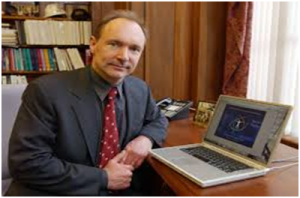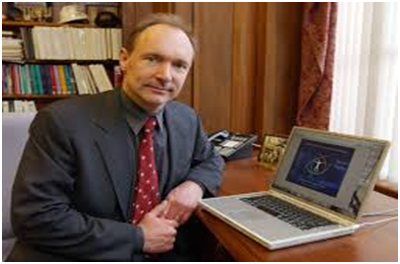
How the web was won
The world’s first website is now 26 years old and was created by a British computer scientist Tim Berners-Lee in 1991. He created it while he was a researcher at the European Organisation for Nuclear Research (CERN) and the website is still in operation today after going live on 6th August 1991. If you want to visit a copy of the original page, you’ll find it at info.cern.ch and it provides some interesting information about the world wide web, explaining the project and giving information about how users can setup a web server and create their own websites. This web actually sits on top of the internet, where documents and pages can be accessed using URL’s and connect to each other using hyperlinks.
The first ever web browser, World Wide Web had a good graphical interface, was set up to enable multiple fonts and sizes, allowed downloads and image displays, sounds and animations. Users could edit their pages to help promote the collaboration in sharing information. For some up-to-date web design ideas, contact a Peterborough Web Design company and visit www.routetoweb.co.uk
Tim Berners-Lee is now a Sir and he has said that information linked on the web enables humans to discover new things, forge ideas, buy and sell things and engage with new people at an incredible speed. The concept of linking has led to huge globalisation which has transformed politics, led to global businesses and changed the way we socially interact forever.
When the first website was created, the ‘internet’ was a group of static documents only really used by academic institutions and the military. Berners-Lee wanted to allow these electronic documents to be easily searched and shared by people. He found it frustrating that there was so much information on different computers but to access it, you had to be logged on to that specific computer. What complicated things even further was that sometimes to access different information on different computers, you had to learn a new programming language.
Berners-Lee decided to write programmes that took information from one system and converted it so be inserted into another system. He did this several times so began to think that there must be a better way. He wanted to convert every information system so that it looked like part of an imaginary information system that everyone could access and this was the birth of the World Wide Web. He is an advocate of an open and neutral web and campaigns against censorship by governments. Visiting CERN today, you can still see the original NeXT computer on which he built the first website.
It wasn’t all plain sailing for Sir Berners-Lee as he had made several attempts to get the idea off the ground. He initially made a proposal as early as 1980 but nobody was attracted by the idea. A more detailed proposal for the web was later made in 1989 and then again in 1990, which was finally accepted. There could have been no World Wide Web at all as a similar system was in operation at that time called Gopher, which was much more popular. Unfortunately for them, they decided it would no longer offer the service free of charge and so everyone switched to the web.

Leave a reply